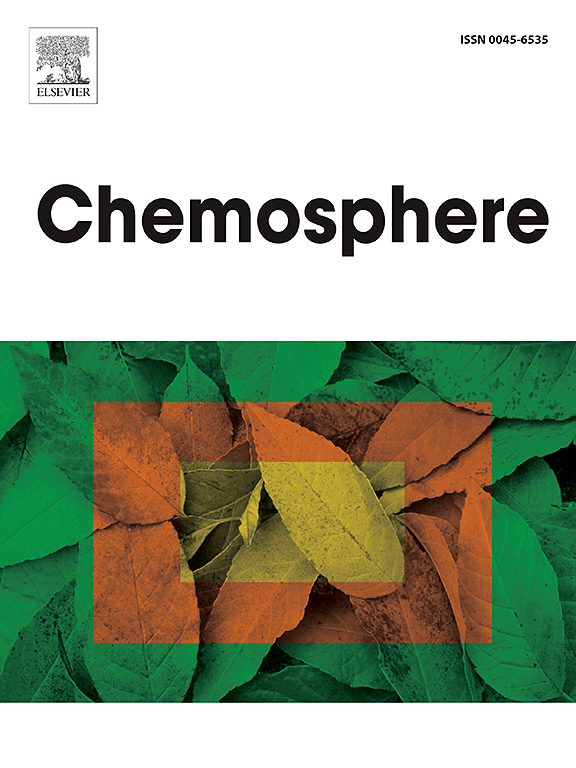Meteorological influences on air pollution dynamics in pollution epicentre of National Capital Region, India
IF 8.1
2区 环境科学与生态学
Q1 ENVIRONMENTAL SCIENCES
引用次数: 0
Abstract
This study analyzes the temporal variations and source characteristics of air pollution in Delhi, examining the influence of meteorological conditions on pollutant concentrations. The goal is to provide insights for policymakers to develop effective emission reduction strategies and improve air quality. Innovative Trend Analysis (ITA) and Detrended Fluctuation Analysis (DFA) were used to identify long-term trends and fluctuations in pollutants such as PM10, PM2.5, NO2, SO2, CO, O3, and NH3 from 2018 to 2023. Continuous Wavelet Transformation (CWT) and Cross-Wavelet Transformation (XWT) were utilized to explore seasonal patterns and pollutant-meteorology interactions. Receptor modeling techniques, including non-parametric wind regression and conditional probability function analysis, were applied to identify major pollution sources. The study found that key emission sources were located to the west, south, and southwest of the monitoring site for most pollutants, with ozone precursors predominantly originating from the north. ITA and DFA revealed persistent long-range correlations in pollutant levels, driven by stable emission sources and seasonal meteorological effects. CWT analysis showed distinct periodic patterns in air quality, with worsening conditions during winter and summer. The research highlights the role of temperature inversions, low wind speeds, and regional pollutant transport in exacerbating pollution levels but emphasizes that human-driven emission sources remain the primary contributors to air quality deterioration. While meteorological factors influence pollution dispersion, they do not diminish the urgency of emission control measures. The findings support the development of targeted pollution control policies, including emission reduction from industrial, vehicular, and biomass burning sources. Advancing real-time air quality monitoring and integrating socio-economic considerations into air pollution management will enhance the effectiveness of interventions, aligning with Sustainable Development Goals (SDG 11 - urban sustainability and SDG 3 - public health).

气象对印度国家首都地区污染震中空气污染动态的影响
本研究分析了德里空气污染的时间变化和来源特征,考察了气象条件对污染物浓度的影响。其目标是为政策制定者制定有效的减排战略和改善空气质量提供见解。采用创新趋势分析(ITA)和非趋势波动分析(DFA)确定了2018 - 2023年PM10、PM2.5、NO2、SO2、CO、O3和NH3等污染物的长期趋势和波动。利用连续小波变换(CWT)和交叉小波变换(XWT)探索季节模式和污染物-气象相互作用。受体建模技术,包括非参数风回归和条件概率函数分析,用于识别主要污染源。研究发现,大多数污染物的主要排放源位于监测点的西部、南部和西南部,臭氧前体主要来自北方。ITA和DFA显示,在稳定的排放源和季节性气象影响的驱动下,污染物水平存在持续的长期相关性。CWT分析显示空气质量具有明显的周期性模式,冬季和夏季条件恶化。该研究强调了逆温、低风速和区域污染物运输在加剧污染水平中的作用,但强调人类驱动的排放源仍然是导致空气质量恶化的主要因素。虽然气象因素会影响污染的扩散,但并不能降低采取排放控制措施的紧迫性。研究结果支持制定有针对性的污染控制政策,包括减少工业、汽车和生物质燃烧源的排放。推进实时空气质量监测并将社会经济因素纳入空气污染管理,将提高干预措施的有效性,与可持续发展目标(可持续发展目标11——城市可持续性和可持续发展目标3——公共卫生)保持一致。
本文章由计算机程序翻译,如有差异,请以英文原文为准。
求助全文
约1分钟内获得全文
求助全文
来源期刊

Chemosphere
环境科学-环境科学
CiteScore
15.80
自引率
8.00%
发文量
4975
审稿时长
3.4 months
期刊介绍:
Chemosphere, being an international multidisciplinary journal, is dedicated to publishing original communications and review articles on chemicals in the environment. The scope covers a wide range of topics, including the identification, quantification, behavior, fate, toxicology, treatment, and remediation of chemicals in the bio-, hydro-, litho-, and atmosphere, ensuring the broad dissemination of research in this field.
 求助内容:
求助内容: 应助结果提醒方式:
应助结果提醒方式:


